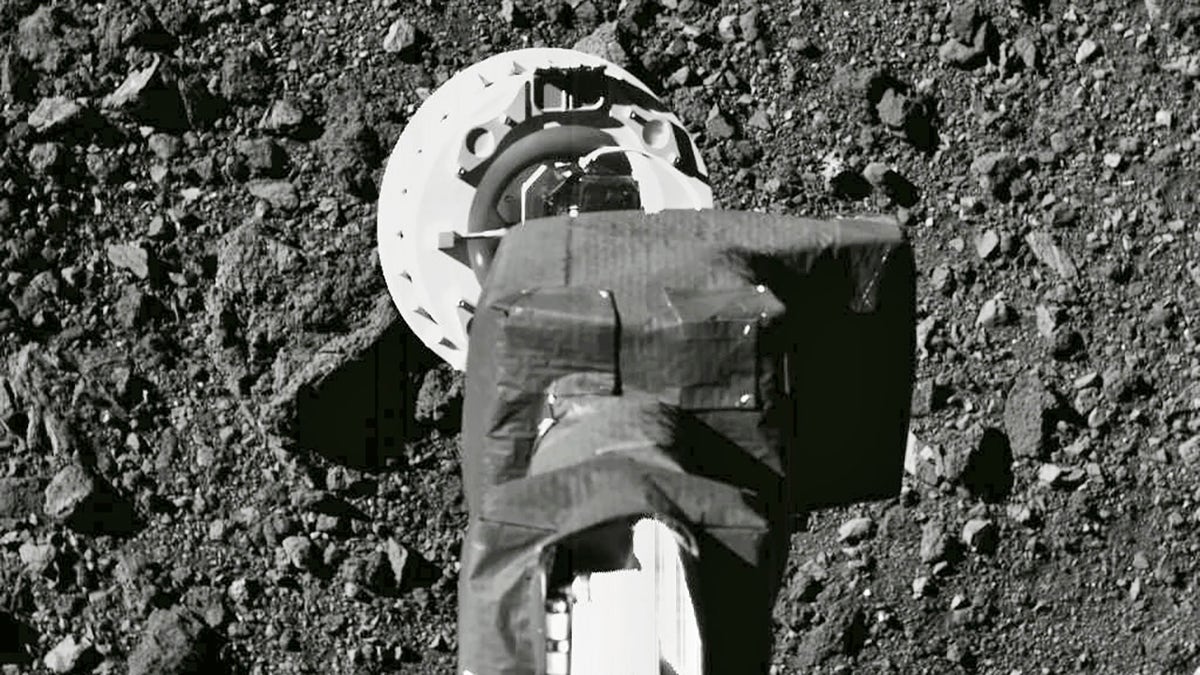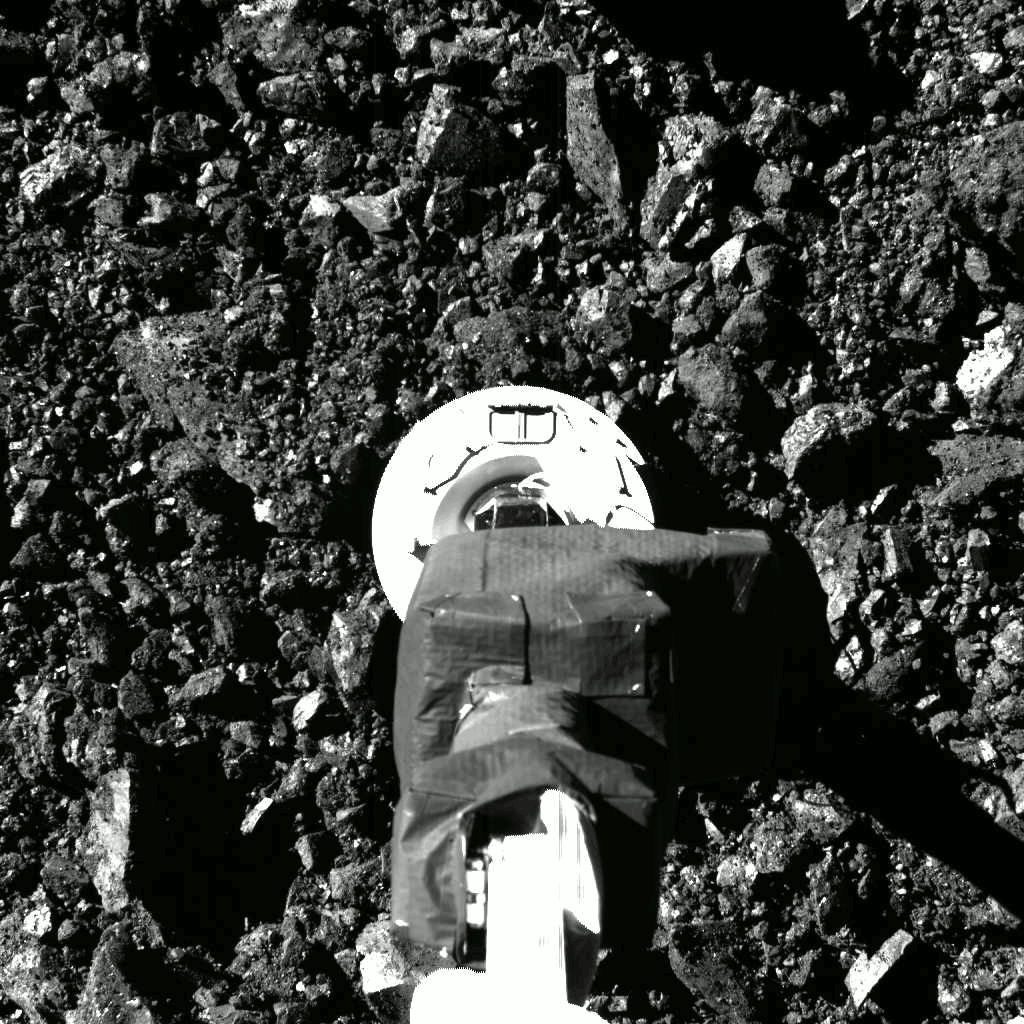
This Aug. 11, 2020 photo shows the sampling arm of the OSIRIS-REx spacecraft during a rehearsal for an approach to the "Nightingale" sample site on the surface of the asteroid Bennu. After almost two years circling the ancient asteroid, OSIRIS-REx will attempt to descend to the treacherous, boulder-packed surface and snatch a handful of rubble on Tuesday, Oct. 20, 2020. (NASA/Goddard/University of Arizona via AP)
Following Tuesday's historic touchdown on the asteroid Bennu, NASA has released never-before-seen images of the OSIRIS-REx spacecraft kicking up rocks and debris on the space rock's surface.
The images are from the point in time when OSIRIS-REx approached and touched down on the surface of Bennu, which is more than 200 million miles from Earth.
"The spacecraft’s sampling arm – called the Touch-And-Go Sample Acquisition Mechanism (TAGSAM) – is visible in the lower part of the frame," NASA wrote on its website. "The round head at the end of TAGSAM is the only part of OSIRIS-REx that contacted the surface during the sample collection event. In the middle of the image sequence, the sampling head positions itself to contact the asteroid’s surface head-on."

Captured on Oct. 20 during the OSIRIS-REx mission’s Touch-And-Go (TAG) sample collection event, this series of 2 images shows the SamCam imager’s field of view at the moment before and after the NASA spacecraft touched down on asteroid Bennu’s surface. The sampling event brought the spacecraft all the way down to sample site Nightingale, and the team on Earth received confirmation of successful touchdown at 6:08 p.m. EDT. Preliminary data show the sampling head touched Bennu’s surface for approximately 6 seconds, after which the spacecraft performed a back-away burn. (Credits: NASA/Goddard/University of Arizona)
ASTEROID COULD STRIKE EARTH DAY PRIOR TO ELECTION
After OSIRIS-REx landed on the asteroid, it made contact at Nightingale, a tennis court-sized crater on the asteroid. For perspective, Bennu is approximately 500 meters (1,640 feet) in diameter.
The images, which were created right after the craft touched down, show the robotic arm penetrating the asteroid's regolith and appearing to crush some of the rocks underneath.
"One second later, the spacecraft fires a nitrogen gas bottle, which mobilizes a substantial amount of the sample site’s material," NASA added. "Preliminary data show the spacecraft spent approximately 5 of the 6 seconds of contact collecting surface material, and the majority of sample collection occurred within the first 3 seconds."
NASA also released a video of the touchdown and apparent sample collection.
It's unclear if NASA actually retrieved a sample. However, Dante Lauretta, the principal investigator of OSIRIS-REx at the University of Arizona, said at a press conference he thought the chances "have gone way up" that something was collected after analyzing the images.
Once the researchers are able to determine if OSIRIS-REx did indeed grab a sample (at least 60 grams), the team will start to make plans for the craft to leave Bennu in 2021. It will then deliver the asteroid sample to Earth on Sep. 24, 2023.
NASA recently revealed that parts of another asteroid, Vesta, have been spotted on the surface of Bennu.
Prior to touchdown, the mysterious space rock had already revealed some of its secrets, including the presence of carbon-bearing materials.
Several studies were published on the matter in the journals Science and Science Advances, noting that carbon-bearing, organic material is "widespread" on the surface of the asteroid.
CLICK HERE TO GET THE FOX NEWS APP
During the early days of the Solar System, as planets were being formed, debris flew throughout space, much of which never became a planet or moon and wound up becoming part of the asteroid belt.
Due to Bennu's unique composition, it may bolster the argument for panspermia, the idea that life on Earth originated from microorganisms in outer space that were carried here unintentionally by objects such as space dust, meteoroids and asteroids.
Fox News' James Rogers contributed to this story.

